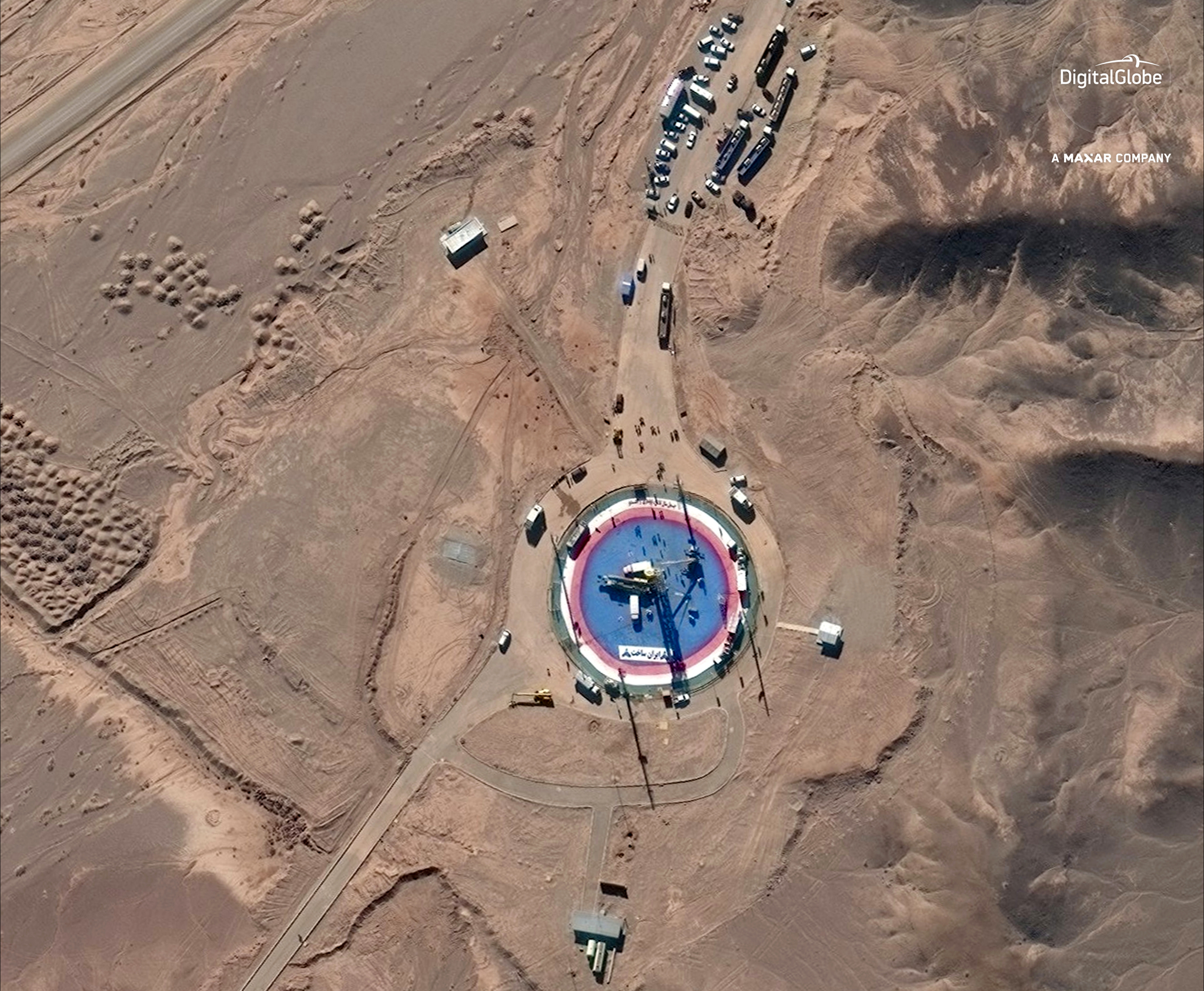Iran satellite launch fails to reach orbit

Iran's space program suffered another setback on Sunday (Feb. 9).
The nation launched a communications satellite called Zafar 1 atop a Simorgh rocket at 10:45 a.m. EST Sunday (1545 GMT; 7:15 p.m. local time) from Imam Khomeini Space Center in northern Iran, the Associated Press reported. But Zafar 1 didn't make it all the way to orbit.
"Stage-1 and stage-2 motors of the carrier functioned properly and the satellite was successfully detached from its carrier, but at the end of its path it did not reach the required speed for being put in the orbit," Defense Ministry space program spokesman Ahmad Hosseini told Iranian state television, according to the AP.
Related: Iran in space: Rockets, satellites & monkeys (photos)
The failure is not an isolated incident. Iran suffered a Simorgh launch failure in January 2019 and another one with a different rocket, the Safir, a month later. And, in August of last year, a rocket apparently exploded on the pad at Imam Khomeini Space Center, spawning smoke and wreckage that was spotted from space, by satellites operated by San Francisco-based company Planet.
Still, Iranian officials put on a brave face following Sunday's events.
"Today 'Zafar' satellite launch failed. Like many scientific projects, Failure happened. FALCON 9, Juno II, ATLAS, PROTON M, ANTARES are just few samples of US launch failures. But We're UNSTOPPABLE! We have more Upcoming Great Iranian Satellites!" Mohammad Javad Azari Jahromi, Iran's information and communications technology minister, said via Twitter on Sunday.
Breaking space news, the latest updates on rocket launches, skywatching events and more!
Today "Zafar" satellite launch failed. Like many scientific projects, Failure happened. FALCON 9, Juno II, ATLAS, PROTON M, ANTARES are just few samples of US launch failures.But We're UNSTOPPABLE! We have more Upcoming Great Iranian Satellites! 🛰February 9, 2020
Tensions between the United States and Iran have been higher than usual lately. A U.S. drone strike killed high-ranking Iranian general Qasem Soleimani in early January. A few days later, Iran retaliated with missile strikes on several sites in Iraq that housed American troops. Nobody was killed in those strikes, American officials have said, though dozens of service members suffered concussions from the blasts.
Planet satellites also captured imagery of the damage from last month's missile strikes.
- Iran's failed rocket launch spotted from space (photo)
- Satellite spots Iran missile attack aftermath from space
- Iran plane crash wreckage spotted from space (satellite photos)
Mike Wall's book about the search for alien life, "Out There" (Grand Central Publishing, 2018; illustrated by Karl Tate), is out now. Follow him on Twitter @michaeldwall. Follow us on Twitter @Spacedotcom or Facebook.


Michael Wall is a Senior Space Writer with Space.com and joined the team in 2010. He primarily covers exoplanets, spaceflight and military space, but has been known to dabble in the space art beat. His book about the search for alien life, "Out There," was published on Nov. 13, 2018. Before becoming a science writer, Michael worked as a herpetologist and wildlife biologist. He has a Ph.D. in evolutionary biology from the University of Sydney, Australia, a bachelor's degree from the University of Arizona, and a graduate certificate in science writing from the University of California, Santa Cruz. To find out what his latest project is, you can follow Michael on Twitter.
